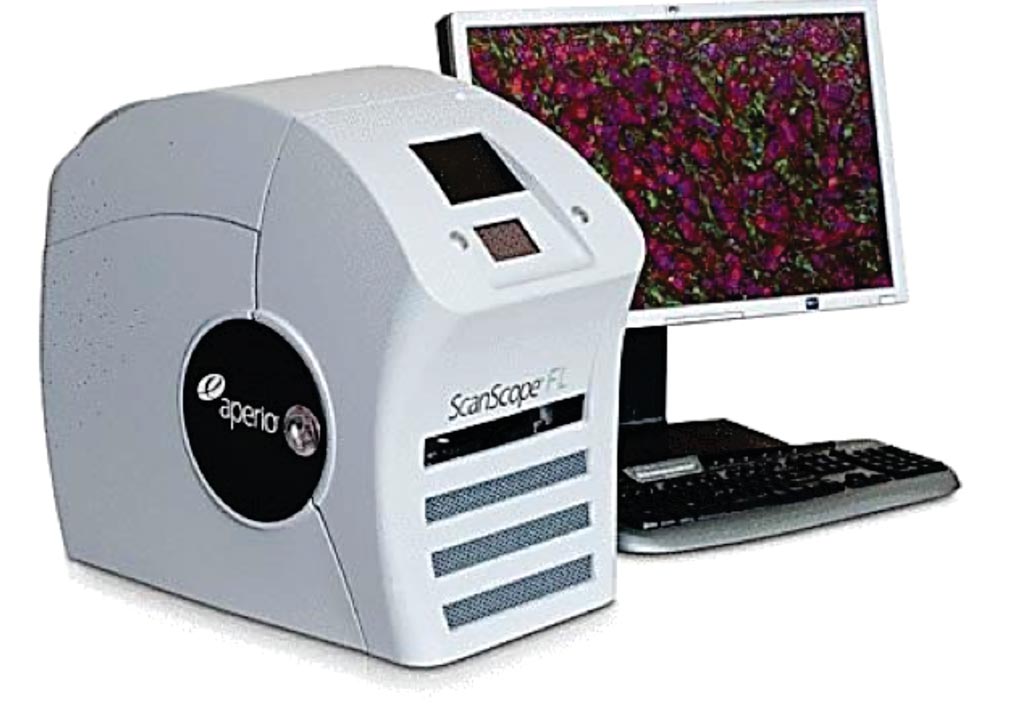Five New Genes Identified for ALS
By LabMedica International staff writers
Posted on 13 Dec 2017
Amyotrophic lateral sclerosis (ALS), also known as Lou Gehrig's disease, is characterized by loss of motor neurons in the brain, brainstem and spinal cord, with concurrent muscle atrophy and is typically fatal within 2–5 years from diagnosis.Posted on 13 Dec 2017
More than 30 genes have been linked to ALS, and mutations in the 11 genes that encode RNA binding proteins cause familial forms of ALS. These RNA binding proteins play a critical role in how genes encoded within the DNA in every cell are converted to the proteins that perform all the functions within a cell.

Image: The ScanScope systems (Photo courtesy of Leica/Aperio).
A team of scientists from the Barrow Neurological Institute (Phoenix, AZ, USA) obtained ALS and non-neurologic disease control post-mortem tissue samples. Paraffin-embedded post-mortem tissue sections from spinal cords and cerebellum were used for immunohistochemistry. Sections were visualized using a Leica AperioScope microscope (Leica Biosystems Inc, Buffalo Grove, IL, USA), and analyzed using the Aperio eSlide manager image analysis. Laser-capture microscopy, RNA extraction and real-time polymerase chain reaction (PCR) analysis was also performed.
The team validated the top 10 RNA binding proteins using five different methods that included use of patient tissue samples and patient derived stem cells differentiated into motor neurons. They also examined a smaller set of RNA binding proteins near the bottom of the list to demonstrate that any changes detected in the top 10 were not observed for those at the bottom of the list, demonstrating the ability of Watson for Drug Discovery to correctly predict RNA binding proteins linked to ALS. Eight of the top 10 candidates were successfully validated and shown to be altered in ALS. Five of these genes had never been examined in ALS, indicating that IBM's artificial intelligence platform could predict novel genes and proteins linked to this disease. RNA binding proteins at the bottom of the list were not altered in ALS.
Robert Bowser, PhD, a professor of neuroscience and senior investigator of the study, said, “Further validating and expanding on our earlier findings has been exciting, because in studies of this nature, time is of the essence. We could have individually looked at the 1,500 proteins and genes but it would have taken us much longer to do so. These findings inspire hope that, with this technology, we may someday identify new and more effective treatments for ALS.” The study was published on November 17, 2017, in the journal Acta Neuropathologica.













